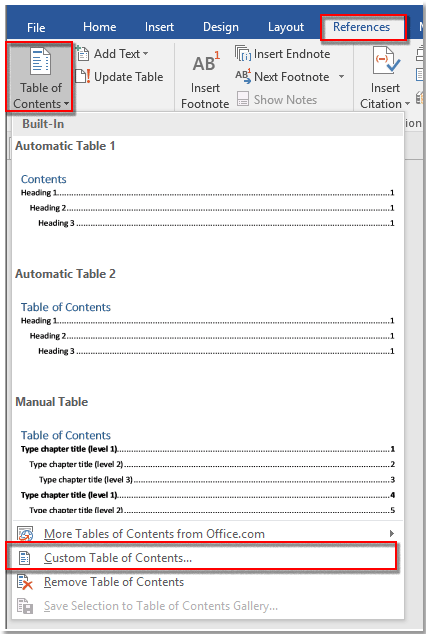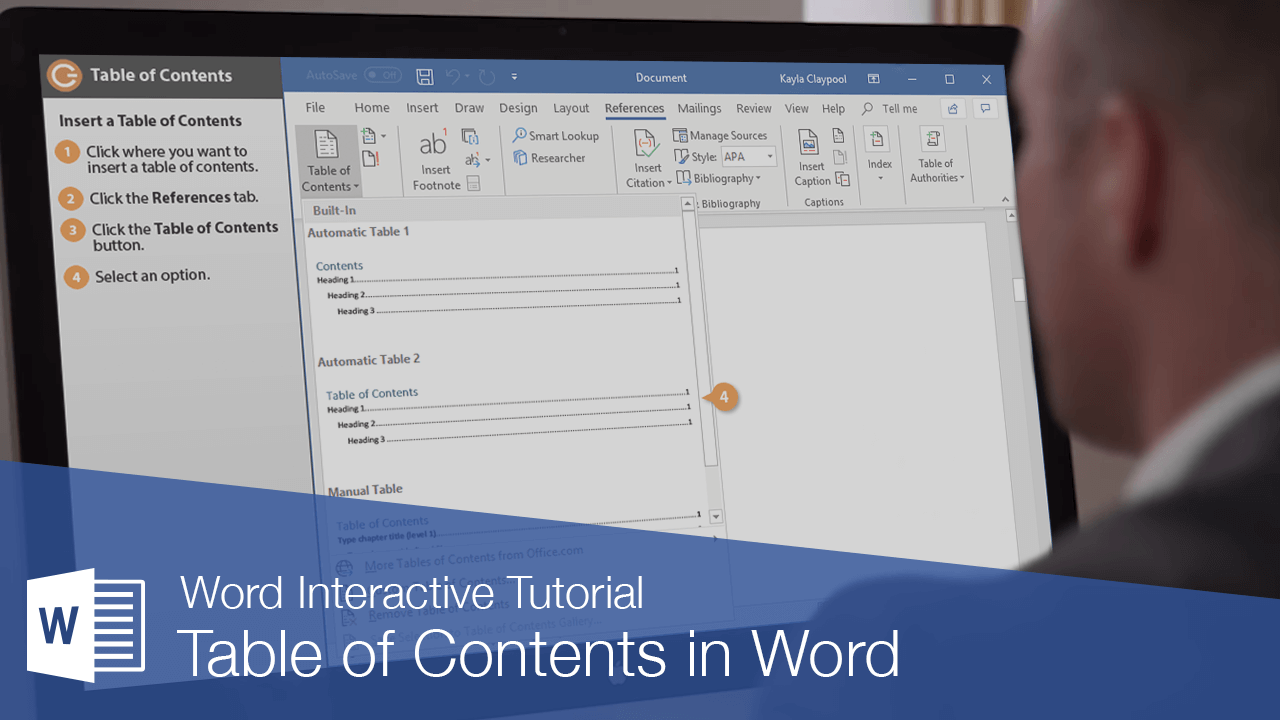

- Adding to word 2016 table of contents update#
- Adding to word 2016 table of contents manual#
- Adding to word 2016 table of contents code#
In most cases, you will probably need to create a customized Table of Contents by selecting "Custom Table of Contents". If you see one that matches what you need, select it. Below it you will see many different pre-defined Table of Contents styles.

Next, go to the "References" tab on the menu, and select "Table of Contents". Place your cursor at the top of the page where you would like to generate the Table of Contents and make sure the line where the cursor is placed is left-justified or full-justified (if it is center-justified, you will not be able to right-align page numbers properly). Step 2: Once you have all the chapter headings and sub-headings flagged with the correct Heading styles or Table of Contents field markers, you can generate your Table of Contents. You can also change the level of the heading by changing the number. You can change the text to be displayed in the Table of Contents by editing the text within the quotation marks inside the brackets. This will not print as part of your document Word only uses it to identify it as a Table of Contents marker.

Adding to word 2016 table of contents code#
Unless you have multiple Table of Contents in your document, leave the "Table identifier" as is.Īfter you click "Mark", Word will automatically turn on showing of formatting symbols, and you should see a TC (Table of Contents) field code in brackets. Next to "Level", select "1" for main chapter titles, "2" for subchapters, "3" for sub-subchapters, etc. In the "Entry" field, enter the text for this section as you would like it to be displayed in your Table of Contents.
Adding to word 2016 table of contents manual#
Press "Alt-Shift-O" (letter O, not zero) to open a manual Table of Contents Entry box. First, select the part of the paragraph you would like to use as the title of the chapter or subchapter (or place your cursor where the new chapter or subchapter begins). If you have a title or subtitle that is part of an existing paragraph, or if you would like the Table of Contents text to be different than what appears in the body of your text, you can insert a manual Table of Contents field instead of applying a Heading style to an entire paragraph. (You can also do this with "Heading 3" styles for sub-sub-headings, etc., if necessary.) Once the "Heading 1" style has been updated to match that in your document, for the other chapter headers, just highlight the chapter title and left-click on the (now-modified) "Heading 1" style to apply it.įor sub-chapter titles, repeat this process, but use the "Heading 2" style instead.
Adding to word 2016 table of contents update#
This will both apply the "Heading 1" style to your chapter heading (allowing the Table of Contents to detect it), and also update the Heading 1 style for your document to match the style you were using. Next, on the "Home" tab on the menu, go to the Styles section and find the style "Heading 1" (but don't click it yet, because clicking it will reformat your title to Word's default "Heading 1" style format).įor your first chapter heading, right-click the style "Heading 1" and select "Update Heading 1 to Match Selection". Step 1: In order for Word to identify the headers and subheaders for your Table of Contents, you need to apply the appropriate "Heading" styles to your chapter and sub-chapter headers.įor example, to mark a chapter title as a Level 1 Heading, first select the text that you would like to appear as the chapter heading in the Table of Contents by clicking-and-dragging your cursor over it to highlight it. Setting this up can be a time-consuming process, but if you are writing a lengthy document that will go through several drafts, the automatic Table of Contents can save you a lot of manual revising each time your page numbers or chapter titles change. Microsoft Word has an automatic table of contents function that can automatically generate a table of contents for your document, provided you correctly tag the chapter headers and sub-headers that you wish to show in your table of contents.


 0 kommentar(er)
0 kommentar(er)
